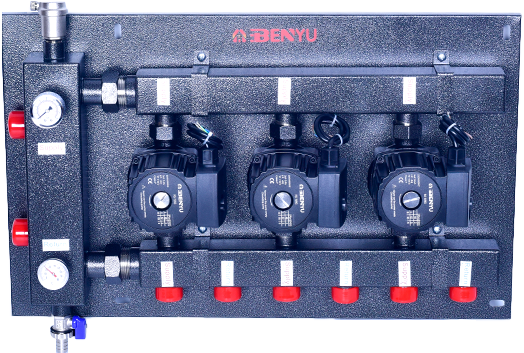In today’s construction and HVAC industries, there's a growing focus on how to make systems not only efficient but also visually and functionally integrated into modern spaces. One area where this is becoming increasingly important is the use of manifold cabinets in integrated heating systems. These components are evolving to meet the needs of both installers and property owners, balancing performance with clean design.

A manifold cabinet serves as a housing unit for the manifold, which distributes heated water to various zones in a hydronic or radiant floor integrated heating system. As these systems become more common in homes and commercial buildings, expectations around accessibility, durability, and appearance have shifted. No longer just a metal box in a utility room, the modern manifold cabinet is being designed to blend seamlessly into walls, save space, and simplify maintenance.
One noticeable shift in the industry is the move toward combining technical precision with user-friendly design. Installers are looking for cabinets that support neat pipe layouts, easy access to valves, and quick servicing without requiring complex disassembly. At the same time, architects and homeowners often prefer a manifold cabinet that doesn’t interrupt the overall look of a room. This demand has led to a variety of surface-mounted and recessed models that can be painted or finished to match their surroundings.
The push for better integration is closely tied to the rise of integrated heating systems. These systems rely heavily on zoning, where different rooms or areas have separate temperature controls. A well-designed manifold cabinet helps manage these zones effectively, keeping everything organized and easy to monitor. When installed properly, it also contributes to energy savings by ensuring that heat is delivered exactly where and when it’s needed.
Another key development is the use of smarter layouts and materials that support long-term performance. Some newer manifold cabinets include thoughtful touches like pre-drilled holes, adjustable brackets, and removable panels. These features don't just make the installer's job easier—they also help when adjustments or inspections are needed down the road. For integrated heating systems, which depend on ongoing reliability, small improvements in cabinet design can make a real difference over time.
While efficiency and functionality are essential, design still matters. Many modern buildings aim for clean lines and uncluttered walls, so a bulky or poorly placed manifold cabinet can stand out in the wrong way. That’s why some installers now prioritize early planning during construction or renovation projects, finding the right place for the cabinet before other systems go in. This kind of forethought ensures that the integrated heating setup feels like a part of the building’s structure rather than an afterthought.
Of course, these upgrades aren’t just about appearances. A thoughtfully installed manifold cabinet also enhances safety and long-term maintenance. With better access points and clearer labeling, technicians can perform quick checks or repairs without needing to dismantle large portions of the system. In integrated heating, where performance is closely tied to balance and flow, this accessibility can prevent small issues from turning into larger problems.
The evolution of the manifold cabinet reflects a broader trend in the HVAC and construction world: making systems that work well and fit smoothly into the spaces we live and work in. As integrated heating becomes more common, these cabinets are stepping up in terms of both design and efficiency. They're no longer just functional components—they're becoming a smart part of the overall system, contributing to comfort, energy use, and interior aesthetics all at once.

 Language
Language













 Qigang Road, Huanghuaguitou Industrial Zone, Liu Shi Town, Yueqing City, Wenzhou City, Zhejiang Province
Qigang Road, Huanghuaguitou Industrial Zone, Liu Shi Town, Yueqing City, Wenzhou City, Zhejiang Province 



